An anthology television series is a program that presents a different story with a different set of characters in each episode. These normally have different actors each week but some employed a permanent ensemble of actors who would appear in a different drama each week (like Four Star Playhouse). Others would have different actors and stories set in the same ‘shared world’ (like Welcome To Paradox). Many anthology shows would have a host to introduce the story, sometimes by a fictional character (like Ghost Story and The Hitchhiker), sometimes by the show’s producer himself (like Alfred Hitchcock and Rod Serling). This is by no means intended to be a complete listing but a chronological overview of the best and most unusual television anthologies. I have deliberately chosen not to include the ‘Love Boat‘-style shows in which different characters and stories are carried out in the presence of a regular cast, such as Fantasy Island, Supertrain, Bates Motel, Time Express, Quantum Leap, and others. I would very much like to thank Wikipedia and The Complete Directory To Prime-Time Network TV Shows by Tim Brooks and Earle Marsh for assisting me in researching this article.
 Produced in 1951, TALES OF TOMORROW is considered television’s first adult science fiction series, using both classic and modern stories of strange and supernatural happenings. Among the stories were The Crystal Egg (by H.G. Wells), The Monsters (concerning extraterrestrials), The Dark Angel (about a woman who never ages), Frankenstein, The Flying Saucer, and a two-part version of Twenty Thousand Leagues Under The Sea. The program was produced by George F. Foley Junior and starred such talents as Walter Abel, Lon Chaney Junior, Lee J. Cobb, Eva Gabor, Boris Karloff, Brian Keith, Veronica Lake, Gene Lockhart, Thomas Mitchell, Paul Newman, Leslie Nielsen and Rod Steiger. A total of eighty-five episodes were produced and, in 1953, was one of the first television programs to be simulcast on radio.
Produced in 1951, TALES OF TOMORROW is considered television’s first adult science fiction series, using both classic and modern stories of strange and supernatural happenings. Among the stories were The Crystal Egg (by H.G. Wells), The Monsters (concerning extraterrestrials), The Dark Angel (about a woman who never ages), Frankenstein, The Flying Saucer, and a two-part version of Twenty Thousand Leagues Under The Sea. The program was produced by George F. Foley Junior and starred such talents as Walter Abel, Lon Chaney Junior, Lee J. Cobb, Eva Gabor, Boris Karloff, Brian Keith, Veronica Lake, Gene Lockhart, Thomas Mitchell, Paul Newman, Leslie Nielsen and Rod Steiger. A total of eighty-five episodes were produced and, in 1953, was one of the first television programs to be simulcast on radio.
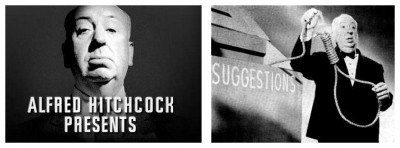 Who was the first major Hollywood filmmaker to willingly choose to produce television, decades before it became trendy? In ALFRED HITCHCOCK PRESENTS, the benign countenance of the pudgy film director welcomed viewers to stories of terror, horror, suspense and twists for an entire decade from 1955. His clipped British accent and jovial theme music (Funeral March Of A Marionette by Charles Gounod) became television icons. The stories would often appear to end with evil triumphant, violating the television code of ethics. This was always resolved during the epilogue, when Hitchcock would explain in his deadpan sardonic way, that the villain had eventually received his comeuppance. When the show expanded to a full hour in 1962 the title was changed to THE ALFRED HITCHCOCK HOUR, and was chosen by Time magazine as one of the hundred best television shows ever.
Who was the first major Hollywood filmmaker to willingly choose to produce television, decades before it became trendy? In ALFRED HITCHCOCK PRESENTS, the benign countenance of the pudgy film director welcomed viewers to stories of terror, horror, suspense and twists for an entire decade from 1955. His clipped British accent and jovial theme music (Funeral March Of A Marionette by Charles Gounod) became television icons. The stories would often appear to end with evil triumphant, violating the television code of ethics. This was always resolved during the epilogue, when Hitchcock would explain in his deadpan sardonic way, that the villain had eventually received his comeuppance. When the show expanded to a full hour in 1962 the title was changed to THE ALFRED HITCHCOCK HOUR, and was chosen by Time magazine as one of the hundred best television shows ever.
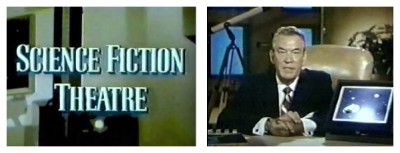 Based on flights of fact rather than fancy, SCIENCE FICTION THEATRE was hosted and narrated by news reporter Truman Bradley who opened each show with a demonstration of the scientific concept at the heart of that week’s story. These included cryogenics, telepathy, time travel, space travel, transplants and other medical advancements. A series aimed at adults, it generally took a positive view of science and deliberately avoided the twist-in-the-tale endings. One episode singled out for critical praise was Strange People At Pecos, in which the words ‘Martians Go Home!’ are scrawled in childish letters on a pavement as an entire town – adults and children alike – turns against a family who appear to be aliens. The story offered no definitive conclusion, but that week’s ‘concept’ was teleportation. Several familiar names, including Vincent Price and Vera Miles, appeared in the series.
Based on flights of fact rather than fancy, SCIENCE FICTION THEATRE was hosted and narrated by news reporter Truman Bradley who opened each show with a demonstration of the scientific concept at the heart of that week’s story. These included cryogenics, telepathy, time travel, space travel, transplants and other medical advancements. A series aimed at adults, it generally took a positive view of science and deliberately avoided the twist-in-the-tale endings. One episode singled out for critical praise was Strange People At Pecos, in which the words ‘Martians Go Home!’ are scrawled in childish letters on a pavement as an entire town – adults and children alike – turns against a family who appear to be aliens. The story offered no definitive conclusion, but that week’s ‘concept’ was teleportation. Several familiar names, including Vincent Price and Vera Miles, appeared in the series.
In one story, The Strange Doctor Lorenz, veteran actor Edmund Gwenn played a beekeeper whose honey had remarkable healing properties, In another story, William Lundigan – star of the 1959 series Men Into Space – played a test pilot driven mad by high-level refusal to believe his story of ‘something’ flying at three times the speed of sound that nearly collided with his plane, and Star Trek’s DeForest Kelley appeared in an episode called Y.O.R.D. about strange signals from space picked up by a weather station. In America, the series ran for 78 episodes between 1955 and 1957 which went into syndication during the sixties under the title BEYOND THE LIMITS. The first season was in colour but the second season was filmed in black-and-white to cut costs.
SHIRLEY TEMPLE’S STORYBOOK was hosted and narrated by the former child actress and featured adaptations of fairy tales and other family-friendly fantasies starring very well-known actors. Among the stories adapted (often in musical form) were Winnie The Pooh, The Prince And The Pauper, Babes In Toyland, and The Reluctant Dragon. Temple’s three children made their acting debuts in the last episode of the first season, and when a stagehand said ‘sh*t’ during rehearsal, Temple had him fired, although no children were present during the rehearsal. Temple read each script and made suggestions for improvement if necessary. Guest stars included Claire Bloom, Sebastian Cabot, Jackie Coogan, Jonathan Harris, Charlton Heston, E.G. Marshall, Agnes Moorehead, J. Pat O’Malley, Pernell Roberts, Jack Weston, Jonathan Winters and Joseph Wiseman. The show was first seen as a series of sixteen specials on various nights in 1958. In 1959 the program began to run regularly every third Monday night and, in 1960, became a weekly series and was renamed THE SHIRLEY TEMPLE SHOW.
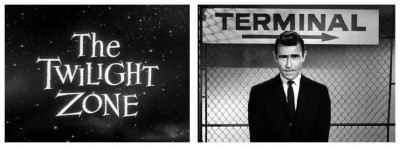 “There is a fifth dimension beyond those known to man. It is a dimension as vast as space and timeless as infinity. It is the middle-ground between light and shadow, between the pit of his fears and the summit of his knowledge. This is the dimension of imagination, it is an area we call THE TWILIGHT ZONE.” Few television shows have bequeathed a more treasured legacy of ideas and style, and it still stands as the role model for the anthology genre. It’s trenchant parables on humanity draw the viewer in by gently tugging at the sleeve of the imagination and, through science fiction, fantasy and horror, explore human hopes and despairs, prides and prejudices, strengths and weaknesses, in ways conventional drama never can. The Twilight Zone was created by Rod Serling, a butcher’s son from Binghampton, New York, whose writing talent had flourished in the early days of television drama, winning three Emmy awards. A relentless, prolific writer, Serling himself wrote the majority of the show’s 156 scripts. Said to have suffered insomnia, he kept a tape recorder at his bedside to dictate ideas that came to him as he tried to sleep. The series other major contributors were Richard Matheson and Charles Beaumont, and each had his own distinctive style.
“There is a fifth dimension beyond those known to man. It is a dimension as vast as space and timeless as infinity. It is the middle-ground between light and shadow, between the pit of his fears and the summit of his knowledge. This is the dimension of imagination, it is an area we call THE TWILIGHT ZONE.” Few television shows have bequeathed a more treasured legacy of ideas and style, and it still stands as the role model for the anthology genre. It’s trenchant parables on humanity draw the viewer in by gently tugging at the sleeve of the imagination and, through science fiction, fantasy and horror, explore human hopes and despairs, prides and prejudices, strengths and weaknesses, in ways conventional drama never can. The Twilight Zone was created by Rod Serling, a butcher’s son from Binghampton, New York, whose writing talent had flourished in the early days of television drama, winning three Emmy awards. A relentless, prolific writer, Serling himself wrote the majority of the show’s 156 scripts. Said to have suffered insomnia, he kept a tape recorder at his bedside to dictate ideas that came to him as he tried to sleep. The series other major contributors were Richard Matheson and Charles Beaumont, and each had his own distinctive style.
Where Serling’s tales tended to be more whimsical and sentimental, Beaumont’s were dark and disturbing, while Matheson wrung every nuance of suspense out of his carefully structured stories. But all the episodes were topped and tailed by Serling’s memorable, measured narration. The series was also notable for featuring both established stars (like Burgess Meredith, Mickey Rooney, James Whitmore and Ed Wynn) and actors who would later become famous (like Charles Bronson, Robert Duvall, Peter Falk, Mariette Hartley, Dennis Hopper, Ron Howard, Jack Klugman, Lee Marvin, Elizabeth Montgomery, Billy Mumy, Leonard Nimoy, Robert Redford, Burt Reynolds, Telly Savalas and William ‘The Shat’ Shatner).
“What you are about to see is a matter of human record. Explain it? We cannot. We simply invite you to explore with us the amazing world of the unknown, to take that…ONE STEP BEYOND.” Neither science nor fiction, One Step Beyond dealt specifically with the realms of psychic/paranormal phenomena. Yet this vintage anthology series, which did as much as any to blur the edges of reality, repeatedly crops up in genre guides and has long been accepted into the hearts of television fans. Created in America, it ran for 94 episodes from 1959 to 1961, but the final thirteen of those episodes were made in Britain, at the now long-lost MGM film studios in Borehamwood by Lancer Films, and were hailed as the first time British television production had gone into association with an established American network show.
Using mainly British scripts, they featured British character actors like Adrienne Corri, Michael Crawford, Roger Delgado, Anton Diffring, Christopher Lee, Lois Maxwell, Ferdy Mayne, Donald Pleasance and Peter Wyngarde. Like the rest of the series, the stories dealt with various psychic phenomena – supernatural visitations, ESP, dreams that predict disaster, hallucinations of the future, reincarnations of the past. These episodes – and the series a a whole – were directed and hosted by American actor John Newland who took sardonic delight in introducing what became renown as a genuinely spooky glimpse of the paranormal. Because the copyright has lapsed on some of the episodes, several distribution companies have released episode packages using 16mm syndication prints rather than the 35mm originals, resulting in uneven audio and video.
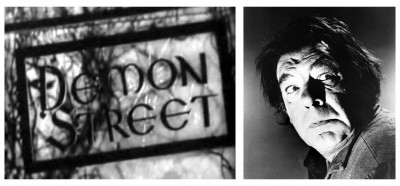 13 DEMON STREET was a Swedish-made horror anthology that aired on American television from 1959 to 1960, but only thirteen half-hour episodes were produced. Lon Chaney Junior would introduce each story from his ‘home’ at 13 Demon Street, supposedly to convince the audience that his crimes were no worse than the crimes presented in each story, thus freeing him from purgatory. Unfortunately, Chaney’s crime was never specified. The series was created by acclaimed horror screenwriter Curt Siodmak, who also wrote and directed several episodes. Siodmak had previously written The Wolf Man (1941), hence Chaney’s participation in the series.
13 DEMON STREET was a Swedish-made horror anthology that aired on American television from 1959 to 1960, but only thirteen half-hour episodes were produced. Lon Chaney Junior would introduce each story from his ‘home’ at 13 Demon Street, supposedly to convince the audience that his crimes were no worse than the crimes presented in each story, thus freeing him from purgatory. Unfortunately, Chaney’s crime was never specified. The series was created by acclaimed horror screenwriter Curt Siodmak, who also wrote and directed several episodes. Siodmak had previously written The Wolf Man (1941), hence Chaney’s participation in the series.
INSIGHT was an award-winning anthology series that ran for 250 episodes from 1960 to 1983, presenting half-hour dramas illuminating the search for meaning using melodrama, comedy, science fiction, fantasy and horror to explore moral dilemmas. The series was created by a Roman Catholic priest named Ellwood ‘Bud’ Kieser who worked in the entertainment industry as a producer, using television as a vehicle of spiritual enlightenment. The anthology format, the religious nature, and the production quality of the program attracted a wide variety of actors including Jack Albertson, Ed Asner, Beau Bridges, Patty Duke, James Franciscus, Lou Gossett Junior, Bob Hastings, Jack Klugman, Robert Lansing, Walter Matthau, Bob Newhart, John Ritter, Martin Sheen, Cicely Tyson and Adam West. Directors included Marc Daniels, Arthur Hiller, Norman Lloyd, Delbert Mann, Ted Post, Jay Sandrich, and Jack Shea. Writers included William Peter Blatty, Michael Crichton and Rod Serling.
 The host for the 1961 series ‘WAY OUT (that’s not a typo, the title begins with an apostrophe) was well chosen. Roald Dahl was a writer of short, macabre stories about people in strange and unsettling situations. The dramas in this series all fell into that category and CBS screened it alongside another anthology called The Twilight Zone. ‘Way Out was noticeably less successful, however, and lasted only three and a half months. The atmospheric half-hour stories were introduced by Dahl’s dry delivery of a brief introductory monologue, sometimes explaining a method of murdering a spouse without getting caught. Other writers included Sumner Locke Elliott and Philip H. Reisman Junior.
The host for the 1961 series ‘WAY OUT (that’s not a typo, the title begins with an apostrophe) was well chosen. Roald Dahl was a writer of short, macabre stories about people in strange and unsettling situations. The dramas in this series all fell into that category and CBS screened it alongside another anthology called The Twilight Zone. ‘Way Out was noticeably less successful, however, and lasted only three and a half months. The atmospheric half-hour stories were introduced by Dahl’s dry delivery of a brief introductory monologue, sometimes explaining a method of murdering a spouse without getting caught. Other writers included Sumner Locke Elliott and Philip H. Reisman Junior.
OUT OF THIS WORLD was Britain’s first series of thirteen one-hour science fiction teleplays broadcast in 1962 and introduced by the master of the macabre, Boris Karloff. Through the lineage of its creator, Irene Shubik, this pioneering anthology was the forerunner of the BBC’s prestigious series OUT OF THE UNKNOWN. At the time, Shubik was a television story editor and had already established a strong track record for picking plays for ARMCHAIR THEATRE. She tapped the talents of leading science fiction writers including genre giants Isaac Asimov, Philip K. Dick, and Clifford Simak, and enlisted notable British television writers like Clive Exton and Leon Griffiths to adapt their stories. The series also featured the work of another promising writer by the name of Terry Nation, later to become the creator of the Daleks, Survivors, and Blake’s Seven. Being an anthology, Out Of This World found time and space to explore different styles and moods of science fiction, from the grim suspense of Impostor to the tender intrigue of Medicine Show, from the macabre comedy of Vanishing Act to broad satire in The Tycoons. There was no shortage of familiar faces in the cast, with Patrick Allen, Jane Asher, Maurice Denham, Ronald Fraser, Charles Gray, Gerald Harper, Dinsdale Landen, Geraldine McEwan and Peter Wyngarde among the leads. Producer for the series was Leonard White and the stable of directors included Guy Verney, director of The Pathfinders trilogy. The pilot episode, Dumb Martian from a story by John Wyndham, was chosen by network drama boss Sydney Newman to be shown in Armchair Theatre’s time-slot as a curtain-raiser to the series proper, with Boris Karloff appearing at the play’s end to announce the impending start of the series, six days later.
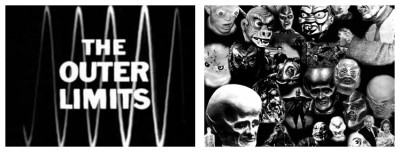 “There is nothing wrong with your television set. Do not attempt to adjust the picture. We are controlling transmission. We control the horizontal, we control the vertical. For the next hour, sit quietly and we will control what you see and hear. You are about to participate in a great adventure. You are about to experience the awe and mystery which reaches from the inner mind to….THE OUTER LIMITS.” This was the ultimate monster-of-the-week show. Other series might explore the bizarre or the fantastic with the aim of exciting, amusing, or merely arousing dormant grey cells, but this 1963 American anthology series was designed to scare the living daylights out of its audience. Week after week, your television set was taken over by some of the creepiest aliens ever created for the small screen.
“There is nothing wrong with your television set. Do not attempt to adjust the picture. We are controlling transmission. We control the horizontal, we control the vertical. For the next hour, sit quietly and we will control what you see and hear. You are about to participate in a great adventure. You are about to experience the awe and mystery which reaches from the inner mind to….THE OUTER LIMITS.” This was the ultimate monster-of-the-week show. Other series might explore the bizarre or the fantastic with the aim of exciting, amusing, or merely arousing dormant grey cells, but this 1963 American anthology series was designed to scare the living daylights out of its audience. Week after week, your television set was taken over by some of the creepiest aliens ever created for the small screen.
These weren’t cuddly extraterrestrials, these were full-blooded agents of terror, collectively dubbed ‘Bears’ by producer Joseph Stefano, screenwriter of Alfred Hitchcock’s Psycho (1960). According to Stefano, the ‘Bear’ is that one splendid. staggering, shuddering effect in a story that induces awe or wonder or terror, and among the most memorable ‘Bears’ were giant bugs with ugly humanoid faces for The Zanti Misfits, living rocks in Corpus Earthling, a shimmering Andromedan conjured up for The Galaxy Being, a flat-faced cyclops in O.B.I.T. and The Invisibles, which were slug-like parasites that burrowed into their human hosts, attaching themselves to the spinal cord and dominating the subject’s will. But there was more to The Outer Limits than its monsters.. Its brief was also to explore people and the nature of humanity through advancing and expanding diverse aspects of science such as space travel, time travel, other dimensions, strange experiments, and alien psychologies. The show was created by television producer Leslie Stevens but it was Stefano who gave the show its discipline and its ‘Bears’. He encouraged the imaginative cinematography that won the series critical praise for its visual style – lots of low, wide-angled shots, deep shadows and dim lighting to heighten the tension to produce a Noir look and feel. Narrated by the disembodied voice of Vic Perrin, the only regular actor was William O. Douglas Junior who donned many of the outlandish monster costumes, but the show also gave big breaks to promising young actors like Eddie Albert, Michael Ansara, Dabney Coleman, Robert Culp, Bruce Dern, James Doohan, Robert Duvall, Sally Kellerman, Martin Landau, David McCallum, Leonard Nimoy, Simon Oakland, Cliff Robertson, William Shatner, Henry Silva and Adam West.
 TALES OF MYSTERY was a 1963 anthology series of uncanny and supernatural tales by renown ghost storyteller Algernon Blackwood. These forays into a bizarre imagination were hosted by Scottish actor John Laurie (best remembered as Corporal Fraser in Dad’s Army) whose wide staring eyes and quietly sinister delivery set the tone for an eerie series. The tales in the first season stuck closely to the ‘ghost story’ theme, the second season branched out to include some broader-based fantasies. The Man Who Found Out starred Charles Lloyd Pack as a man seeking for the secret of the universe. He deciphers a set of engraved tablets found buried in the Middle East and finds that they tell the story of the entire future of humanity, but the secret is too terrible to bear and he dies after reading the tablets. Another story, Nephele, concerns an archeologist who finds the shoes of a slave dancer of ancient Rome and is possessed by their strange power which compels him to ‘witness’ a tragic drama played out seventeen centuries before. The Telephone explored the teasing idea of inanimate objects apparently developing lives of their own. In The Pikestaff Case, an enigmatic lodger offers his landlady the chance to change the whole pattern of her life. In The Insanity Of Jones, a man who can see back through time avenges a four-hundred-year-old crime. Among familiar names appearing in the series were Francesca Annis, Peter Barkworth, John Barron, Patrick Cargill, Harry H. Corbett, Tenniel Evans and Dinsdale Landen.
TALES OF MYSTERY was a 1963 anthology series of uncanny and supernatural tales by renown ghost storyteller Algernon Blackwood. These forays into a bizarre imagination were hosted by Scottish actor John Laurie (best remembered as Corporal Fraser in Dad’s Army) whose wide staring eyes and quietly sinister delivery set the tone for an eerie series. The tales in the first season stuck closely to the ‘ghost story’ theme, the second season branched out to include some broader-based fantasies. The Man Who Found Out starred Charles Lloyd Pack as a man seeking for the secret of the universe. He deciphers a set of engraved tablets found buried in the Middle East and finds that they tell the story of the entire future of humanity, but the secret is too terrible to bear and he dies after reading the tablets. Another story, Nephele, concerns an archeologist who finds the shoes of a slave dancer of ancient Rome and is possessed by their strange power which compels him to ‘witness’ a tragic drama played out seventeen centuries before. The Telephone explored the teasing idea of inanimate objects apparently developing lives of their own. In The Pikestaff Case, an enigmatic lodger offers his landlady the chance to change the whole pattern of her life. In The Insanity Of Jones, a man who can see back through time avenges a four-hundred-year-old crime. Among familiar names appearing in the series were Francesca Annis, Peter Barkworth, John Barron, Patrick Cargill, Harry H. Corbett, Tenniel Evans and Dinsdale Landen.
The cause of British adult science fiction was rarely better served than by a prestigious BBC anthology series of single teleplays known as OUT OF THE UNKNOWN. Drawn heavily from the written works of top-notch science fiction writers such as Isaac Asimov, Michael J. Bird, Ray Bradbury, Nigel Kneale, Frederick Pohl and John Wyndham, Out Of The Unknown ran for four seasons between 1965 and 1971 – two black-and-white, two in colour – and became a magnet for some of the brightest talent around at the time. Inspiration came from producer Irene Shubik who already had an enviable track record in the field, as a story editor she had helmed the pioneering 1962 science fiction anthology series OUT OF THIS WORLD, and had also established a reputation for picking winners for the renown ARMCHAIR THEATRE series. Among the screenwriters working on the first season were Leon Griffiths, Terry Nation and Bruce Stewart (later to write the best of the Timeslip series), all of who had worked with Shubik on Out Of This World. The directorial credits included Alan Bridges, Peter Sasdy and Philip Saville, and among the ranks of BBC designers were Barry Leroyd, Peter Seddon and Ridley Scott who, of course, found greater acclaim as director of Alien (1979 and Blade Runner (1982). The series regularly attracted high-calibre casts with Ed Begley, George Cole, Marius Goring, David Hemmings, Donald Huston, Warren Mitchell, Milo O’Shea, Rachel Roberts and Anton Rodgers among the stars. Being an anthology, Out Of The Unknown was never tied to one particular style, although it sometimes felt like a monster-of-the-week show. Some stories were played for suspense (The Counterfeit Man, Time In Advance, Lambda One, The World In Silence), some played on fears (Some Lapse Of Time, Frankenstein Mark II) and others aimed at satire (The Midas Plague), black comedy (Second Childhood) or whimsy (Andover And The Android, Satisfaction Guaranteed). Nearly all had something to offer the starved intellect. The first three years were exclusively science fiction, but the final year featured supernatural horror. Explaining the decision to take the series away from pure science fiction, producer Alan Bromly told Radio Times magazine, “To do these things really successfully must involve you in spending an enormous amount of money on special effects, which is beyond the reach of television. When everybody has seen men walking on the moon and sat through a cliffhanger about getting them back alive, then just setting a story somewhere in space is not, you can see, the automatic thrill that it was.” The Golden Era of the science fiction anthology was over.
 MYSTERY AND IMAGINATION was a British production featuring classic tales of horror and the supernatural. Five series were broadcast from 1966 to 1970 and featured the works of well-known authors such as M.R, James, Sheridan Le Fanu, Edgar Allan Poe, Mary Shelley, Robert Louis Stevenson and Bram Stoker. David Buck starred as Richard Beckett, who not only acted as host but (in a strange precursor to Quantum Leap) Beckett would also appear in each story as one of the characters.
MYSTERY AND IMAGINATION was a British production featuring classic tales of horror and the supernatural. Five series were broadcast from 1966 to 1970 and featured the works of well-known authors such as M.R, James, Sheridan Le Fanu, Edgar Allan Poe, Mary Shelley, Robert Louis Stevenson and Bram Stoker. David Buck starred as Richard Beckett, who not only acted as host but (in a strange precursor to Quantum Leap) Beckett would also appear in each story as one of the characters.
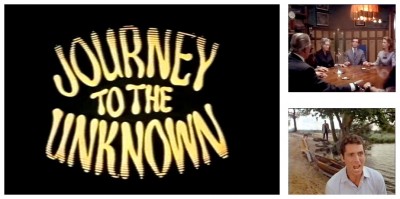 JOURNEY TO THE UNKNOWN was produced by Joan Harrison, a former associate of Alfred Hitchcock, and was a collection of psychological suspense dramas encompassing devil worship, reincarnation, murder, revenge and the supernatural, although it did touch on science fiction too. Stranger In The Family (a remake of an OUT OF THE UNKNOWN story), The Madison Equation (a jealous husband programs a computer to kill his wife), and Jane Brown’s Body (a suicide victim is resurrected by an experimental drug). The anthology of seventeen stories was made in Britain by Hammer Films and marked that company’s first venture in television. It has since notched up at least two more excellent series: HAMMER HOUSE OF HORROR in 1980 and HAMMER HOUSE OF MYSTERY AND SUSPENSE in 1984. The series huge budget (12 million pounds) was all-American, the cash coming from 20th Century Fox and the ABC network, which is why the show premiered in America in September 1968, several weeks prior to its British debut. It featured actors from both sides of the Atlantic: Tom Adams, Jane Asher, Barbara Bel Geddes, Ann Bell, Joseph Cotten, Patty Duke, Chad Everett, Robert Lansing, Carol Lynley, Roddy McDowall, George Maharis, Vera Miles, Nanette Newman, Stefanie Powers, Robert Reed and Dennis Waterman. Seventeen episodes were made, eight of which were combined to make four feature-length films with added material: The New People and Paper Dolls became Journey Into Darkness (1968) hosted by Patrick McGoohan; Poor Butterfly and The Indian Spirit Guide became Journey To Midnight (1968) hosted by Sebastian Cabot; Matakitas Is Coming and The Last Visitor became Journey to The Unknown (1969) hosted by Joan Crawford; and Do Me A Favour Kill Me and The Killing Bottle became Journey To Murder (1971) also hosted by Joan Crawford. The series had a memorable whistled theme tune and creepy title sequence involving a dark deserted Battersea fairground.
JOURNEY TO THE UNKNOWN was produced by Joan Harrison, a former associate of Alfred Hitchcock, and was a collection of psychological suspense dramas encompassing devil worship, reincarnation, murder, revenge and the supernatural, although it did touch on science fiction too. Stranger In The Family (a remake of an OUT OF THE UNKNOWN story), The Madison Equation (a jealous husband programs a computer to kill his wife), and Jane Brown’s Body (a suicide victim is resurrected by an experimental drug). The anthology of seventeen stories was made in Britain by Hammer Films and marked that company’s first venture in television. It has since notched up at least two more excellent series: HAMMER HOUSE OF HORROR in 1980 and HAMMER HOUSE OF MYSTERY AND SUSPENSE in 1984. The series huge budget (12 million pounds) was all-American, the cash coming from 20th Century Fox and the ABC network, which is why the show premiered in America in September 1968, several weeks prior to its British debut. It featured actors from both sides of the Atlantic: Tom Adams, Jane Asher, Barbara Bel Geddes, Ann Bell, Joseph Cotten, Patty Duke, Chad Everett, Robert Lansing, Carol Lynley, Roddy McDowall, George Maharis, Vera Miles, Nanette Newman, Stefanie Powers, Robert Reed and Dennis Waterman. Seventeen episodes were made, eight of which were combined to make four feature-length films with added material: The New People and Paper Dolls became Journey Into Darkness (1968) hosted by Patrick McGoohan; Poor Butterfly and The Indian Spirit Guide became Journey To Midnight (1968) hosted by Sebastian Cabot; Matakitas Is Coming and The Last Visitor became Journey to The Unknown (1969) hosted by Joan Crawford; and Do Me A Favour Kill Me and The Killing Bottle became Journey To Murder (1971) also hosted by Joan Crawford. The series had a memorable whistled theme tune and creepy title sequence involving a dark deserted Battersea fairground.
The primary focus of Rod Serling’s NIGHT GALLERY (from the creator of THE TWILIGHT ZONE) was the occult, the supernatural and straight-out horror, reflecting the dark side of Serling’s imagination. Each segment was introduced by Serling in an art gallery where he invited us to view a painting that depicted the coming tale as a nightmare frozen on canvas. Of the hundred-or-so stories broadcast from 1970 to 1973, Serling himself wrote about a third, and the series utilised top Hollywood talent on both sides of the camera. Directors included John Badham, Jeff Corey, Gene Kearney, Leonard Nimoy, Steven Spielberg and Jeannot Szwarc. Two of Serling’s stories were nominated for Emmy awards. They’re Tearing Down Tim Riley’s Bar, in which a lonely widower (William Windom) sees the story of his life paralleled in the destruction of his favourite bar, and The Messiah Of Mott Street, in which a sick old Jew (Edward G. Robinson) refuses to die before he sees the second coming of Christ. Other memorable stories include The Nature Of The Enemy, in which a mission controller (Joseph Campanella) monitors the efforts of an astronaut (Richard Van Vleet) on the surface of the moon who discovers a giant mousetrap. Little Black Bag, in which a discredited physician and drunk (Burgess Meredith) discovers a 21st century medical bag that enables him to effect miraculous cures. The Different Ones, in which a father (Dana Andrews) intends to send his deformed son (Bruce Davison) to another planet in accordance with the Federal Conformity Act of 1993. Camera Obscura, in which a heartless moneylender is hurled through time by a most unusual camera. Class Of ’99, in which a instructor in bigotry (Vincent Price) addresses a class of very unusual graduates. You Can Come Up Now Mrs. Millikan, in which the wife of an inventor agrees to be the subject of his latest experiment. Serling himself became increasingly disillusioned by the studio’s heavy-handed treatment of his idea and retired from television when the series concluded, passing away two years later in 1975 at the terribly young age of fifty.
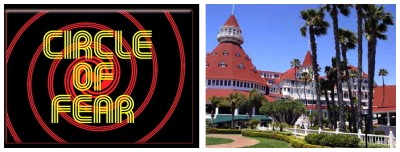 When GHOST STORY premiered in 1972, it dealt exclusively with tales of ghosts, vampires, witches, and various other aspects of the supernatural. This was to be expected being a William Castle production written by Robert Bloch, Harlan Ellison, D.C. Fontana, Richard Matheson and Jimmy Sangster, and directed by Richard Donner, John Lewellyn Moxey and Alexander Singer. It was hosted by Sebastian Cabot in the role of Winston Essex, who would open the show by taking the audience through Essex House and introducing the story as something that could happen to anyone. As the story unfolded, however, it would turn into a bizarre nightmare of one kind or another. In 1973 the host was dropped all together and the title was changed to CIRCLE OF FEAR in order to include new stories of suspense that did not have supernatural overtones. Familiar faces abound including Charles Aidman, John Astin, Richard Benedict, Karen Black, Rory Calhoun, Jackie Cooper, Gary Conway, Tyne Daly, Kim Darby, Angie Dickinson, Melvyn Douglas, Andrew Duggan, Patty Duke, Mike Farrell, Steve Forrest, Jodie Foster, James Franciscus, Pamela Franklin, Leif Garrett, Alice Ghostley, Helen Hayes, Tab Hunter, Sam Jaffe, Carolyn Jones, Henry Jones, Bruce Kimmel, Janet Leigh, Hal Linden, Murray Matheson, Doug McClure, Richard Mulligan, Patricia Neal, Barry Nelson, Susan Oliver, Geraldine Page, Jason Robards, Gena Rowlands, Brad Savage, Martin Sheen, David Soul, Stella Stevens, Regis Toomey, Rip Torn, Stuart Whitman and William Windom.
When GHOST STORY premiered in 1972, it dealt exclusively with tales of ghosts, vampires, witches, and various other aspects of the supernatural. This was to be expected being a William Castle production written by Robert Bloch, Harlan Ellison, D.C. Fontana, Richard Matheson and Jimmy Sangster, and directed by Richard Donner, John Lewellyn Moxey and Alexander Singer. It was hosted by Sebastian Cabot in the role of Winston Essex, who would open the show by taking the audience through Essex House and introducing the story as something that could happen to anyone. As the story unfolded, however, it would turn into a bizarre nightmare of one kind or another. In 1973 the host was dropped all together and the title was changed to CIRCLE OF FEAR in order to include new stories of suspense that did not have supernatural overtones. Familiar faces abound including Charles Aidman, John Astin, Richard Benedict, Karen Black, Rory Calhoun, Jackie Cooper, Gary Conway, Tyne Daly, Kim Darby, Angie Dickinson, Melvyn Douglas, Andrew Duggan, Patty Duke, Mike Farrell, Steve Forrest, Jodie Foster, James Franciscus, Pamela Franklin, Leif Garrett, Alice Ghostley, Helen Hayes, Tab Hunter, Sam Jaffe, Carolyn Jones, Henry Jones, Bruce Kimmel, Janet Leigh, Hal Linden, Murray Matheson, Doug McClure, Richard Mulligan, Patricia Neal, Barry Nelson, Susan Oliver, Geraldine Page, Jason Robards, Gena Rowlands, Brad Savage, Martin Sheen, David Soul, Stella Stevens, Regis Toomey, Rip Torn, Stuart Whitman and William Windom.
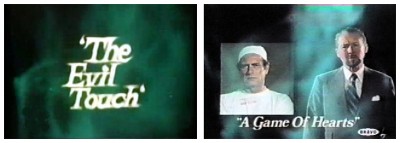 THE EVIL TOUCH was produced and broadcast in Australia in 1973. Several actors appeared in more than one episode playing different characters, and most stories involved a twist ending. The series was created by American producer Mende Brown and partly funded by the Nine Network. The show’s key feature was an international cast – mostly American television actors – taking lead roles in episodes. They were lured to Australia to participate in the show by also being allowed to direct an episode, while supporting roles would be filled by Australian television stars: Tony Bonner, Reg Evans, Julie Harris, Janet Kingsbury, Elaine Lee, Mirren Lee, Carol Lynley, Darren McGavin, John Morris, Vic Morrow, Leslie Nielsen, Jack Thompson and Ray Walston. Each episode was introduced by Anthony Quayle who appeared in a darkened studio surrounded by unearthly smoke, and would return to provide the epilogue, reminding us “…that there is a touch of evil in all of us. Pleasant dreams.” Because of its production values and leading actors, many American viewers assumed the show was made in Canada. Although Australian television was still black-and-white in 1973, to aid international marketability this series was shot entirely in colour and on film.
THE EVIL TOUCH was produced and broadcast in Australia in 1973. Several actors appeared in more than one episode playing different characters, and most stories involved a twist ending. The series was created by American producer Mende Brown and partly funded by the Nine Network. The show’s key feature was an international cast – mostly American television actors – taking lead roles in episodes. They were lured to Australia to participate in the show by also being allowed to direct an episode, while supporting roles would be filled by Australian television stars: Tony Bonner, Reg Evans, Julie Harris, Janet Kingsbury, Elaine Lee, Mirren Lee, Carol Lynley, Darren McGavin, John Morris, Vic Morrow, Leslie Nielsen, Jack Thompson and Ray Walston. Each episode was introduced by Anthony Quayle who appeared in a darkened studio surrounded by unearthly smoke, and would return to provide the epilogue, reminding us “…that there is a touch of evil in all of us. Pleasant dreams.” Because of its production values and leading actors, many American viewers assumed the show was made in Canada. Although Australian television was still black-and-white in 1973, to aid international marketability this series was shot entirely in colour and on film.
BEASTS was a 1976 anthology of six horror stories with a bestial theme written by respected screenwriter Nigel Kneale. Two years before, he had resigned from the BBC, his main employer for over two decades and the producer of his groundbreaking dramas from The Quatermass Experiment (1953) to The Stone Tape (1972). His first script for ATV used an isolated superstitious farming community as a setting to explore ideas of witchcraft. Rarely seen, it was an atmospheric and intriguing work which led too the making of the following year’s anthology series, Beasts. Dealing with mankind’s relationship with animals, the six teleplays were modest in scale and budget, but they made the best of their limited resources and were driven by Kneale’s distinctive imagination. Stories include the ghost of a super-intelligent dolphin; a modern re-working of Red Riding Hood; an expectant mother discovers a hideous mummified creature entombed in a wall of her home; a horror actor fuses with his monstrous alter-ego and goes on a murderous rampage; a girl’s unrequited love for her boss manifests itself as a destructive poltergeist; and an argumentative middle-class couple are united in terror as their isolated rural home is under siege by a relentless army of rats. Cast includes Anthony Bate, Bernard Horsfall, Michael Kitchen, Patrick Magee, Simon McCorkindale, T.P. McKenna, Pauline Quirke, Elizabeth Sellars, Martin Shaw, Clive Swift and Jane Wymark.
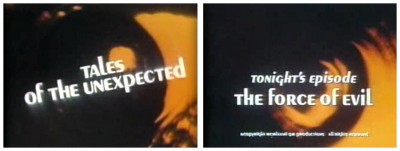 Quinn Martin’s TALES OF THE UNEXPECTED was a short-lived anthology series that focused on stories with a supernatural or psychological twist. It boasted the typical Quinn Martin trappings: Graphics announcing ‘Act I’, ‘Act II’, etc; Good production values and location shooting; Popular actors like Bill Bixby, Lloyd Bridges and Roy Thinnes; Narration by William Conrad; Decent scripts; and lots of Ford vehicles.
Quinn Martin’s TALES OF THE UNEXPECTED was a short-lived anthology series that focused on stories with a supernatural or psychological twist. It boasted the typical Quinn Martin trappings: Graphics announcing ‘Act I’, ‘Act II’, etc; Good production values and location shooting; Popular actors like Bill Bixby, Lloyd Bridges and Roy Thinnes; Narration by William Conrad; Decent scripts; and lots of Ford vehicles.
Roald Dahl’s TALES OF THE UNEXPECTED (not to be confused with the American show of that name) was a British series hosted by the author between 1979 and 1988, with memorable if repetitive theme music by Australian-born composer Ron Grainer. The series originally adapted various stories from Roald Dahl’s anthology books. Despite being produced on a low budget the series attracted guest stars of high calibre, such as Brian Blessed, Joan Collins, Cyril Cusack, John Gielgud, Julie Harris, Wendy Hiller, Ian Holm, Michael Hordern, Derek Jacobi, Janet Leigh, John Mills, Anna Neagle, Elaine Stritch, Rod Taylor and Timothy West. Dahl introduced all of his own stories himself, giving short monologues explaining what inspired him to write them. Although many of Dahl’s stories are left open to the reader’s interpretation, the television series usually provided an generally accepted conclusion.
Check out “Anthology Television Series Shows – A Study of TV’s Best – Part 2” HERE
 Horror News | HNN Official Site | Horror Movies,Trailers, Reviews
Horror News | HNN Official Site | Horror Movies,Trailers, Reviews
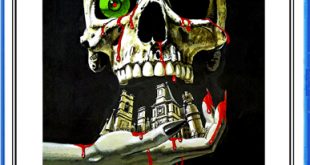


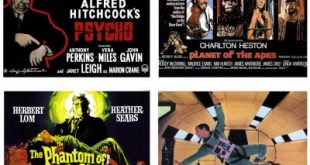
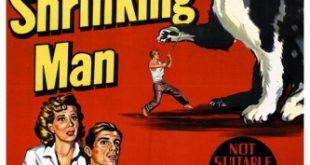
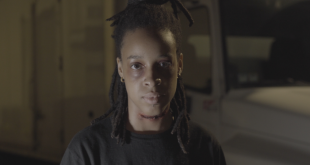
Very nice work! The kind of essays and studies that we really love here at HNN. I’m a big TV series fan, so there will be a few i’ll have to investigate further
There’s a signed petition oging on to get ‘Way Out released in DVD.
If you want to sign you may do it here
http://petitionbureau.org/tvanthologywayout
Excellent stuff! I didn’t know it still existed! I’d love to see ‘WAY OUT’s version of Button Button by Richard Matheson, poorly remade recently as The Box. There’s some interesting names attached to ‘WAY OUT including director Marc Daniels, makeup maestro Dick Smith, and actors like Dana Elcar, Richard Morse, Mark Lenard, Charlotte Rae, Kevin McCarthy, Martin Balsam, Barry Newman, Richard Thomas, Doris Roberts, and Walter Slezak!
I am truly grateful to the holder of this web site who has shared
this impressive piece of writing at here.
Great stuff keep it up i,ll follow